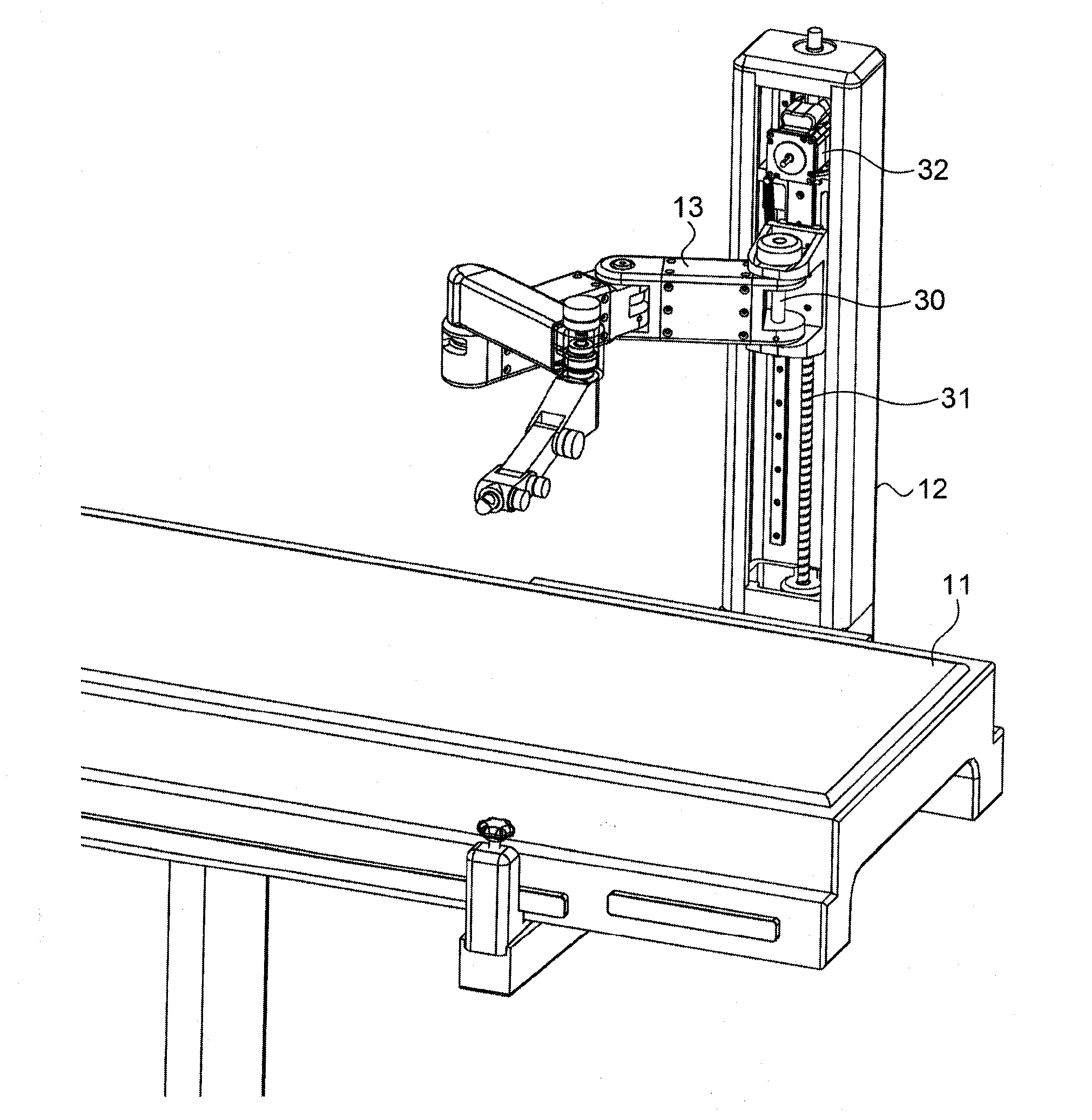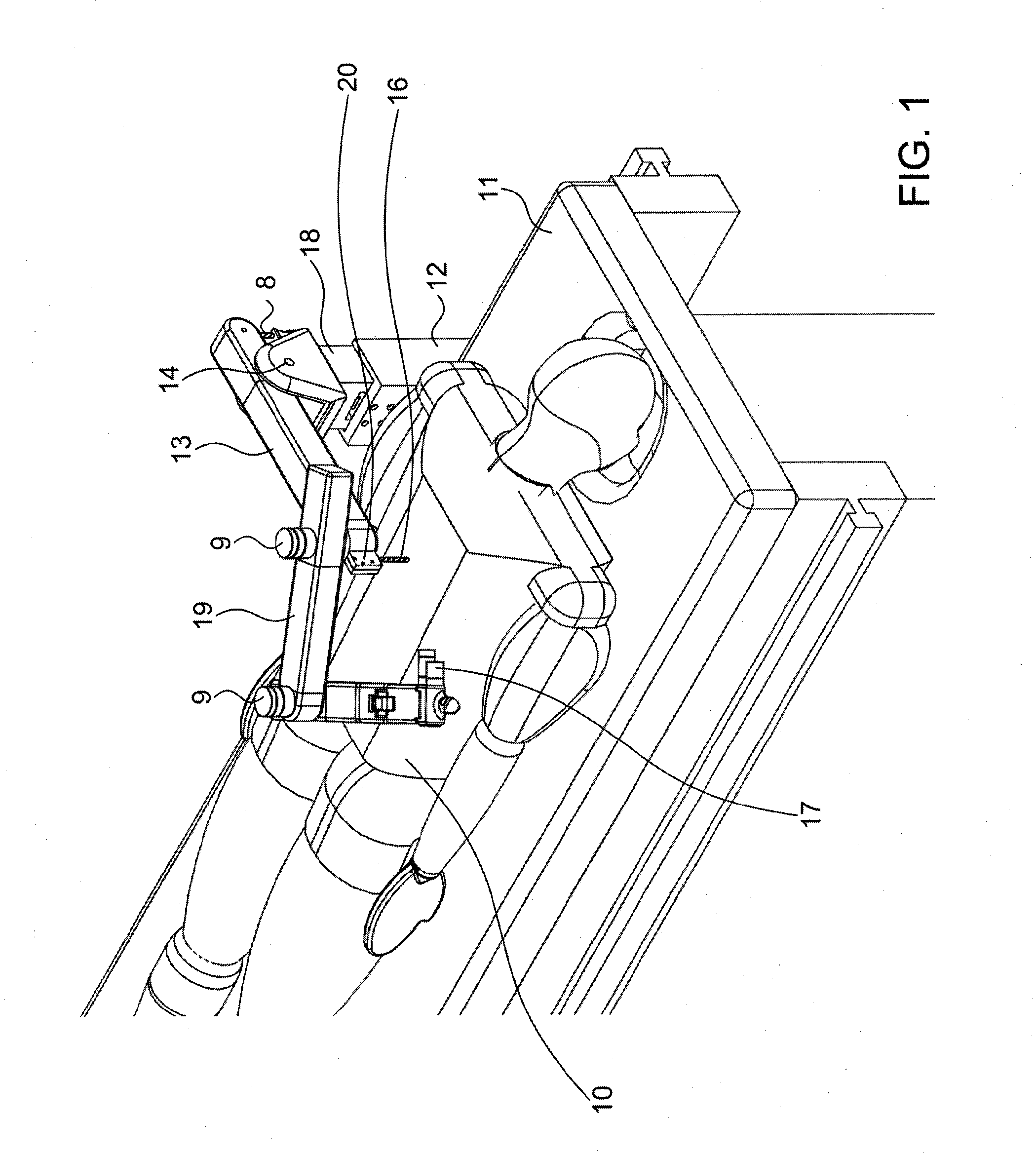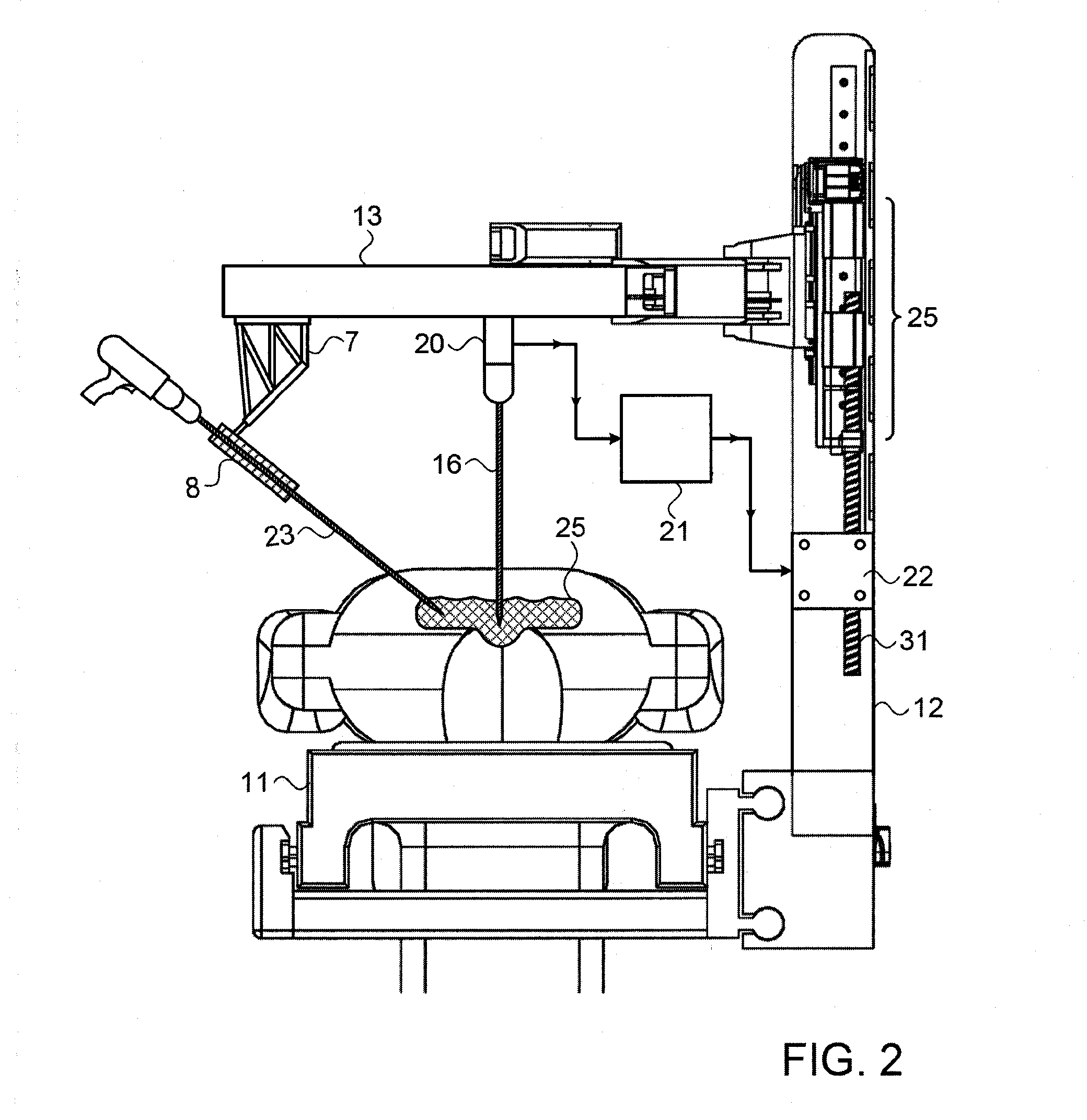Active bed mount for surgical robot
a surgical robot and active technology, applied in the field of robotic surgery, can solve the problems of loss of the positional relationship between the robot and the bone, loss of the defined spatial relationship between the robot coordinate system and the bone, and the robot position is no longer defined, so as to reduce the amount of applied force, reduce the risk of injury, and reduce the effect of surgical pain
- Summary
- Abstract
- Description
- Claims
- Application Information
AI Technical Summary
Benefits of technology
Problems solved by technology
Method used
Image
Examples
Embodiment Construction
[0065]Reference is now made to FIG. 1, which illustrates schematically a first exemplary system for performing robotically guided operations on a subject, using an active bed-mounted system, as described in the present application. In the example of FIG. 1, and of the other drawings in this disclosure, the system is shown performing orthopedic surgery on the patient's spine, though it is to be understood that this is only one possible use of such a system, and it is not intended to limit the application in any way. The robot shown in this exemplary system comprises a linked series of articulated arms 19, coupled together by means of controlled angular motion links 9, such that the complete arm system generates the robotically controlled motion. A surgical robotic actuator 17 or a simple tool guide is shown at the extremity of the controlled articulated arms 19. The robotic arm system 19 is supported on a mechanical mounting member 13. Such an articulated arm robotic system 19 is onl...
PUM
 Login to View More
Login to View More Abstract
Description
Claims
Application Information
 Login to View More
Login to View More - R&D
- Intellectual Property
- Life Sciences
- Materials
- Tech Scout
- Unparalleled Data Quality
- Higher Quality Content
- 60% Fewer Hallucinations
Browse by: Latest US Patents, China's latest patents, Technical Efficacy Thesaurus, Application Domain, Technology Topic, Popular Technical Reports.
© 2025 PatSnap. All rights reserved.Legal|Privacy policy|Modern Slavery Act Transparency Statement|Sitemap|About US| Contact US: help@patsnap.com



